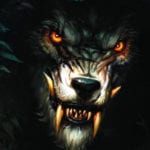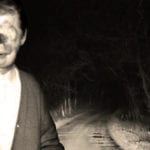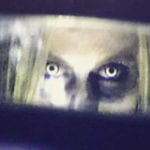 Politics
Politics  Politics
Politics  Weird Stuff
Weird Stuff Ten Bizarre Facts About The Doge Meme
 Our World
Our World 10 Ways Your Christmas Tree Is More Lit Than You Think
 Movies and TV
Movies and TV The 10 Coolest Stars to Set Sail on The Love Boat
 History
History 10 Things You Didn’t Know About the American National Anthem
 Technology
Technology Top 10 Everyday Tech Buzzwords That Hide a Darker Past
 Humans
Humans 10 Everyday Human Behaviors That Are Actually Survival Instincts
 Animals
Animals 10 Animals That Humiliated and Harmed Historical Leaders
 History
History 10 Most Influential Protests in Modern History
 Creepy
Creepy 10 More Representations of Death from Myth, Legend, and Folktale
 Politics
Politics 10 Political Scandals That Sent Crowds Into the Streets
 Weird Stuff
Weird Stuff Ten Bizarre Facts About The Doge Meme
 Our World
Our World 10 Ways Your Christmas Tree Is More Lit Than You Think
Who's Behind Listverse?

Jamie Frater
Head Editor
Jamie founded Listverse due to an insatiable desire to share fascinating, obscure, and bizarre facts. He has been a guest speaker on numerous national radio and television stations and is a five time published author.
More About Us Movies and TV
Movies and TV The 10 Coolest Stars to Set Sail on The Love Boat
 History
History 10 Things You Didn’t Know About the American National Anthem
 Technology
Technology Top 10 Everyday Tech Buzzwords That Hide a Darker Past
 Humans
Humans 10 Everyday Human Behaviors That Are Actually Survival Instincts
 Animals
Animals 10 Animals That Humiliated and Harmed Historical Leaders
 History
History 10 Most Influential Protests in Modern History
 Creepy
Creepy 10 More Representations of Death from Myth, Legend, and Folktale
Top 10 Bizarre American Urban Legends
Every state has its own urban legend. Many of these superstitious tales came about during a period of limited scientific enquiry. A figure caught in someone’s peripheral vision became something sinister and shadowy. The guttural noise of a feral animal turned into the battle cry of an unknowable monster. We instinctively feared what we could not explain, and our overactive imaginations did the rest.
See Also: 10 Creepy Urban Legends From Around The World
But our willingness to believe urban legends once served some evolutionary benefit. These stories often had a kernel of truth, warning us against certain real-life dangers. In a world with few answers, it was always more advantageous to err on the side of caution and avoid any potential human-chomping predators. It did not matter whether that predator was a mythical Sasquatch or just an oversized bear. All that mattered was survival.
Many urban legends remain popular to this day. While such tales are often told with a wink and a smile, some continue to believe them. From the Mothman of West Virginia to the Jersey Devil, so-called cryptozoologists remain ever-watchful. So let us explore just some of these weird and wacky urban legends.
10The Dark Watchers (California)
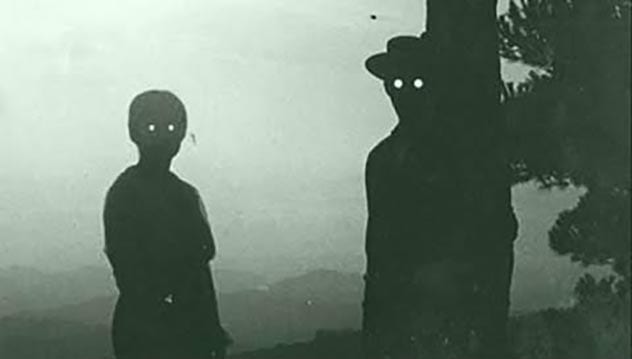
Legend tells of shadowy figures that stalk the Santa Lucia Mountains of Monterey County, California. Spanish conquistadores, who first explored the region in 1602, referred to these otherworldly creatures as the Dark Watchers (Los Vigilantes Oscuros).
The late Thomas Steinbeck, son of the famous writer John Steinbeck, spoke about the Dark Watchers at length. He eventually confided in his friend, artist Benjamin Brode. “The particulars of the account had been told to [Thomas] as a child and authenticated by such credible sources as his grandmother, Olive Hamilton, and Billy Post, descendant of El Sur Grande ranchers,” Brode claimed.
Thomas’ fascination with Dark Watchers ran in the family. John Steinbeck mentioned the mysterious entities in “The Long Valley” – a collection of short stories published in 1938. “Flight” tells the tale of Pepé, a young teen who goes on the run after stabbing a local townsman. Pepé encounters the Watchers while fleeing to the mountains. From the tale: “No one knew who the watchers were, nor where they lived, but it was better to ignore them and never show interest in them. They did not bother one who stayed on the trail and minded his own business.”
John Steinbeck raised Thomas while working as a ranch hand in the mountain region of Big Sur. The writer’s understanding of the Dark Watchers mirrored that of local tales. The humanoid figures usually surface either in the mornings or evenings. And they immediately “disappear like fog” when somebody looks directly at them.
Thomas made contact with local residents Billy and Luci Post, descendants of El Sur Grande ranchers. Post claims the ranchers exhumed the remains of a young girl in the 1920s. After the grave’s desecration, the Dark Watchers disappeared, and the locals were struck by misfortune. According to the Post family, luck was only restored after the ranchers returned the girl to her original resting place.[1]
9The Haunted Pillar (Georgia)
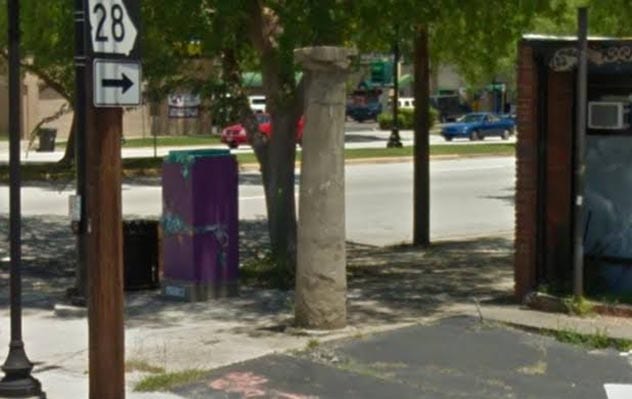
In 1878, an intense storm ripped through the city of Augusta, Georgia. The event killed two people and laid waste to the Old Market. All that remained was a single pillar. Some of the more superstitious locals believed a higher power was responsible for the devastation. But interest soon died down, and the pillar became just another landmark.
During the Great Depression, city officials paid Lockhart International Inc. tens of thousands of dollars to boost tourism to the area. To do so, Lockhart spread rumors that the lone pillar was haunted. The company shared this fake news with national newspapers. The story goes that a disgruntled preacher foretold of the market’s looming destruction. He claimed that only one of the pillars would survive, and whoever attempted to interfere with the structure would meet a grisly end. The con worked. Tourists flocked to the area to learn of Georgia’s “Haunted Pillar.” Contractors even spoke to city’s mayor about the structure’s removal.
The pillar was eventually toppled after a vehicle crashed into it in 1935. Its restoration was funded by a local market owner. In 1958, a large bale of cotton tumbled from a passing truck, destroying the pillar once more. The city restored it again. But the pillar couldn’t catch a break. It was destroyed for a third time in December 2016. Like a phoenix rising from the ashes, the pillar is set to return. The city is preparing designs for the next pillar and has already set aside some funding.[2]
8 Nain Rouge (Michigan)
Every spring, a devil-like monster makes his way through Midtown Detroit aboard a chariot made of hairy cockroach legs. The bizarre spectacle concludes with the fanged beast making a speech in front of the city’s iconic Masonic Temple. The amiable fellow introduces himself as Nain Rouge, the “harbinger of doom.” During the 2015 celebrations, he told the bustling crowd that he was the “living embodiment of everything that holds Detroit back, the red prince of persecution, Cadillac’s folly, the annihilator of hope.”
The Nain’s appearance is supposed to precede some kind of imminent disaster. According to local legend, the Nain Rouge (Red Dwarf) dates back to 1701. They say that Antoine de la Mothe Cadillac, the city’s founder, once beat the creature in a fit of rage. The French explorer then endured decades of terrible misfortune, as did his city.
Today, the Nain is blamed for all manner of problems, from extreme weather conditions to the city’s longstanding economic woes. So every year, thousands of Detroiters chase the scoundrel out of the city. It is hoped the Nain’s exile will bring the city good fortune. The tradition first kicked off in 2010 with the “Marche du Nain Rouge” celebrations. Stores, breweries, and restaurants organized events throughout the week. Parade floats made their way along the city’s rejuvenated Cass Corridor. And revelers dressed up in costumes in a bid to stop the Nain from recognizing them.
But some protesters think Nain Rouge is simply trying to warn the city of its impending doom – not to cause it. Pro-Nainers attend the parade every year and try to spread their own interpretation of the story. The group’s leader, John Tenney, claims the Nain was originally a Native American spirit named Nanabozho. “[W]hen the French came here, obviously it wasn’t a Judeo-Christian god,” Tenney explained, “so they changed it to a red imp or devil and now there’s a parade to drive out, incorrectly, the devil that causes the problems in Detroit.”[3]
7 The Ship of Death (Wyoming)

In the fall of 1862, a United States Army Indian Scout named Leon Webber stood at the edge of the North Platte River in Wyoming. The animal trapper was building a log cabin, six miles from the Fort Laramie military outpost. Suddenly, a thick fog rolled in across the river. The fog began to take shape, gradually transforming into an ancient ship. The frost-covered sails glistened in the evening light. Webber was transfixed. There on the deck, the phantom crewmen surrounded a lifeless, young woman. A horrifying realization dawned upon the trapper:
“The ship suddenly veered over to my side of the river – and I recognized the corpse of that of Margaret Stanley, my best girl-friend – we were to have been married early the following spring. ‘Margy!’ I shouted, preparing to descend to the water.”
As Webber plunged into the misty waters, the ship vanished. He remained at the river until dusk, patiently waiting for any signs of Margaret. But the ship never returned. Webber made his way back to the Stanley residence a month later to discover that his beloved had died.
Using reports from the Cheyenne Bureau of Psychological Research, the paranormal investigation magazine Fate established that the ship was sighted on two other occasions. A local rancher claims he saw the ship resurface near the town of Casper in 1887. At the behest of the vessel’s captain, the crewmen revealed the corpse of the rancher’s wife, her face disfigured and burned. The rancher returned home to find the scorched remains of his wife. She died while attempting to flee a house fire.
The final sighting occurred in 1903. Victor Heibe recalls seeing a dead man aboard the ship: “As the body swayed to and fro from the rocking of the ship, it turned so that I gazed directly into the face. It was the blackened face of my dearest friend.” It turned out that Heibe’s friend was Thomas Horn. A Cheyenne court had convicted Horn of murder and sentenced him to hang. Unbeknownst to Heibe, Horn was hanged in a prison courtyard on the very same day of the ghostly premonition.[4]
6 Escalante Petrified Forest (Utah)
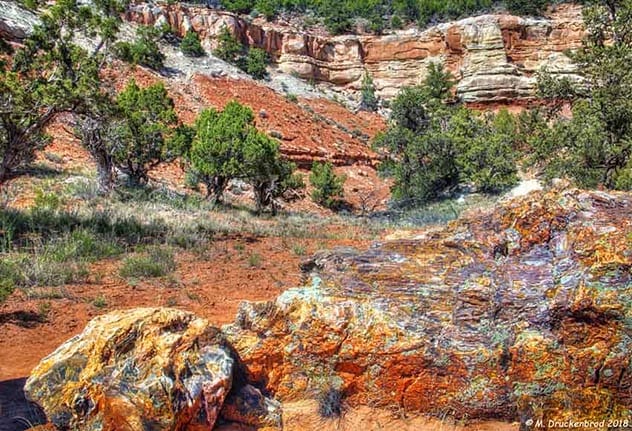
All year round, tourists flock to the scenic nature trails of Garfield County in Utah. The Petrified Forest path takes sightseers on a trip around lava flows and along a series of rocky ravines. Fishers take on the rainbow trout at the Wide Hollow Reservoir. And the mesa is peppered with large deposits of beautiful petrified wood. But some visitors have taken some of the wood, much of which is over 130 million years old, and kept them as keepsakes. From this thievery spawned the Curse of the Petrified Forest.
The force driving the curse remains undefined. However, the forest has allegedly inflicted a range of punishments, including marital breakdowns and serious health problems. Many of the thieves eventually confess to taking the rocks in a desperate bid to lift the curse. Every year, park superintendant Kendall Farnsworth receives around a dozen packages of stolen wood, dubbed “conscience rocks,” along with apology letters. A similar tale has spread about the Petrified Forest National Park in Arizona. Since the 1930s, the park has received around 1,200 pages’ worth of apology letters.
The petrified wood is the result of permineralization. The trees were once part of an old floodplain. Millions of years ago, they were buried by floods and covered in sediment. This stopped the normal decomposition process. Instead, the wood was gradually replaced with minerals, effectively turning it into stone. The lush coloring of the specimen is based upon which minerals are deposited in the wood during preservation. For example, minerals containing iron will produce a reddish hue, while manganese deposits are pink.[5]
5 The Rhinelander Hodag (Wisconsin)
In 1893, Wisconsin businessman Eugene Shepard penned a newspaper article about his encounter with a mysterious dragon-like creature. The formidable monster, known to the locals as the Rhinelander Hodag, stalked the woods near the city of Rhinelander. Shepard said he worked alongside a group of hunters to fell the beast, dispatching it with dynamite. Whispers of the hodag spread throughout the logging camps. The town’s lumberjacks believed hodags were malevolent demons. They arose from the ashes of dead oxen and punished the workers for treating their cattle so poorly.
Shepard’s tales of heroism did not end there. He announced the capture of a hodag in a subsequent column. Mere days later, he showcased the creature at the Oneida County Fair. Of course, it was all an elaborate hoax. Shepard had a puppet built from wood and animal hides. As gullible fair-goers streamed into the poorly-lit exhibition tent, the trickster’s sons did the rest. They moved the horned puppet around while growling at the audience.
The spectacle made headlines across America. The Philadelphia Enquirer, while obviously unconvinced of the story’s legitimacy, ran with the headline, “A Monster with Many Horns.” From the article: “This is not all that is wonderful about the hodag, whose scientific name we are informed is ‘bovine spiritualis.’ It appears that this creature of the bovine species also lays eggs, several of which were found in its nest.”
Shepard’s ruse served a greater purpose. He correctly predicted that Wisconsin’s timber business would go bust. He therefore spread news of the hodag to put Rhinelander on the map. His bet paid off. Today, the Rhinelander High School uses the fictitious creature as its mascot. Statues of the iconic monster are scattered across the city. And local stores sell a range of hodag merchandise, including t-shirts, masks, stuffed animals, and bumper stickers.[6]
4 Buck’s Cursed Tomb (Maine)
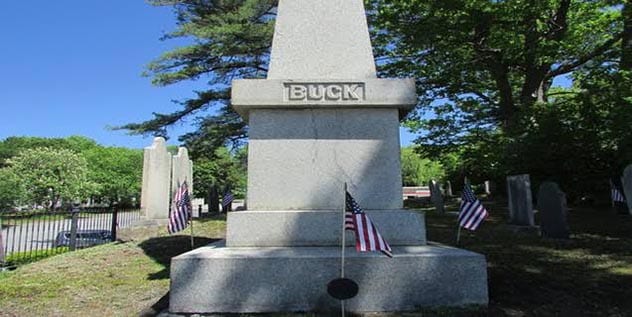
In 1763, Colonel Jonathan Buck founded a small settlement nestled along the Penobscot River in Maine. While the colonel has a storied past, he is often best remembered for something he never actually did. Bizarre stories started to spread soon after Buck’s death. In 1852, his grandchildren placed a monument close to his grave. But an unusual shape, which looked vaguely reminiscent of a woman’s leg, appeared in the rock. Rumor spread that Colonel Buck had previously sentenced a witch to death. Before her death, the witch placed a curse on Buck and said his headstone would forever remind the world of his ill deeds:
“But listen, upon that stone the imprint of my feet will appear, and for all time, long after you and [your] accursed race have perished from the earth, will the people from far and wide know that you murdered a woman. Remember well, Jonathan Buck, remember well.”
In reality, the colonel killed no such person. He was born decades after the hysteria of the witch trials. As justice of the peace, he did not have the jurisdiction to authorize executions. And the strange shape is likely the result of simple weathering.
Regardless, the legend has attracted plenty of tourism. The locals even hold an annual charity event called “Jonathan Buck’s Race to the Grave.” Participants must build their own coffins to qualify for the race. Each team then pushes the coffin towards the finishing line. One of the competitors, a “Jonathan,” must remain seated in the coffin at all times.[7]
3 Kushtakas (Alaska)
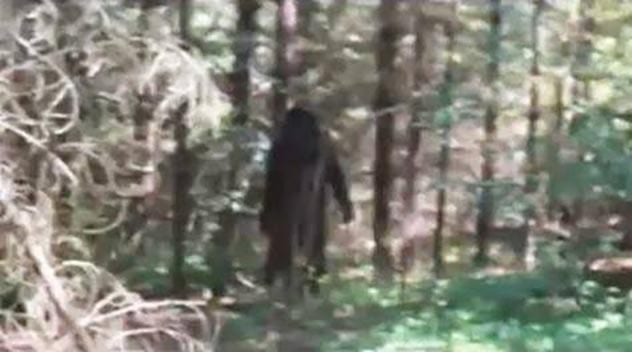
A number of indigenous tribes along the Pacific North Coast believe in a shapeshifting creature called the Kushtaka (Land Otter Man). According to the Tsimshian and Tlingit tribes, the formidable trickster can transform into humans, otters, and wolves. They theorize that all land otters are aligned in some kind of mischievous conspiracy. Otters, they say, are transmogrifying humans into these semi-otter Kushtakas. Once turned, Kushtakas mimic the sounds of babies and children to lure their prey. Others stalk their target and shapeshift into a friend or family member. When a Kushtaka happens upon a lost human, it either takes their soul or turns them into a fellow Kushtaka.
U.S. Navy Lieutenant George Thornton Emmons explored Tlingit culture. Based upon Emmons’ work, the ethnologist and anthropologist Frederica de Laguna described the transformation thusly: “The transformation was slowly accomplished: first hair grew over the body, speech became confused, he began to walk on knees and elbows, a tail grew out, and, in time, he became more otter than human.”
There are very few ways to save the victim’s soul. If quick enough, a skilled shaman can hunt down a missing tribe member and undo the spell. Sometimes these powerful elders entrance a Kushtaka and cut out its tongue. This is the source of the creature’s power. Meanwhile, regular tribe members must rely upon dogs to protect themselves. Dogs see through the many guises of the Kushtaka, and their barking forces the shapeshifters to reveal their true form.[8]
2 The Tombstone Thunderbird (Arizona)
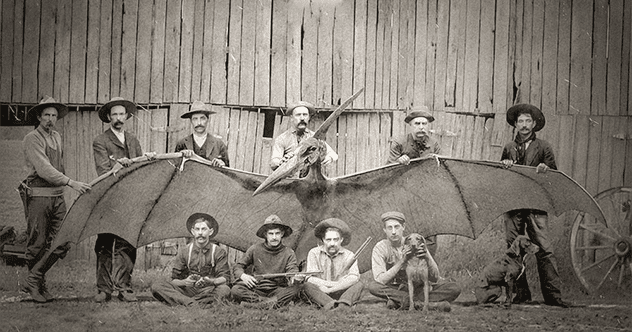
The legend of the Tombstone Thunderbird started with a small Arizona newspaper. In April 1890, the Tombstone Weekly Epitaph published the escapades of two gun-toting ranchers. The pair allegedly encountered an enormous “winged monster” while trekking across a desert just east of the former mining town of Tombstone. The men quickly grabbed their Winchester rifles and gave chase on horseback. After several miles, the ranchers caught up with the beast and killed it. Upon closer inspection, it was said to look like an alligator with wings.
Joshua Hawley, writer of “The Legend of the Tombstone Thunderbird,” remains skeptical. He believes the story was fabricated in response to the town’s economic downturn. “Tombstone was a dusty little town with very few people left inside, so having good news articles to write became more of a challenge,” he explained.
More recently, paranormal investigators claim they have received dozens of reports of thunderbird sightings across the Pacific Coast and Midwest. It has been suggested that these witnesses were merely observing large birds that are already known to wildlife experts. Some describe the thunderbird as a pterodactyl-like animal, which could match the appearance of the great blue heron. The Tombstone Weekly’s original tale, somewhat implausibly, claimed the thunderbird had a 49-meter-long wingspan (160 ft) and eyes “as large as a dinner plate.” According to Hawley, one of the ranchers eventually came forward and said the paper had published a misleading story. “They never shot it down,” Hawley said. “They never killed it… and it flew away.”[9]
1 Spook Hill (Maryland)
In 1997, a group of amateur filmmakers began filming The Blair Witch Project in Maryland. The small village of Burkittsville, which has a population of less than 200 people, played host to the unsettling events. Most of the scenes were actually filmed in other parts of Maryland. But that did not stop legions of giddy teenagers from descending upon the surrounding woods, shaky cams at the ready.
Even though The Blair Witch is entirely fictitious, Burkittsville has another star attraction: Spook Hill. According to local legend, Spook Hill is haunted by the spirits of dead Civil War soldiers. In 1862, forces under the command of Robert E. Lee assaulted Maryland. The bulk of the Confederate forces attacked western Maryland, while a small detachment was ordered to stall the Union’s reinforcements from the east. The Confederates blocked a narrow passage in the South Mountain, just outside of Burkittsville. After a 3-hour-long battle, the Confederates retreated. Heavy losses were suffered on both sides and thousands more were injured. “Every house had to have six or seven wounded and when they died they had to be dragged out and put into the fields. Well, spook stories are going to come out of that,” explained Paul Gilligan, the village’s former mayor.
That story was Spook Hill, a short stretch of road along Gapland Road in Burkittsville. When a ball is placed on the road’s surface, it appears to roll up the incline. Even a car put in neutral will slowly roll up Spook Hill, as if defying the laws of gravity. Some believe the spirits of the dead soldiers are pulling the objects back towards the village.
In reality, Spook Hill is just an optical illusion. The objects are actually rolling downhill – not uphill. The driver is made to think they are rolling upwards, as they cannot see the level horizon around them. The surrounding trees and landscape are often tilted at a steeper angle relative to the road. This, combined with the fact that humans are terrible at estimating the angle of slopes, creates a mind-bending effect. Our brains essentially “make up” a new horizon, because the surrounding landmarks are positioned in a way that we are not used to seeing.[10]
For more lists like this one, check out 10 Famous Urban Legends Come To Life, and 10 Creepy And Outrageous Urban Legends That Turned Out To Be Completely True.
